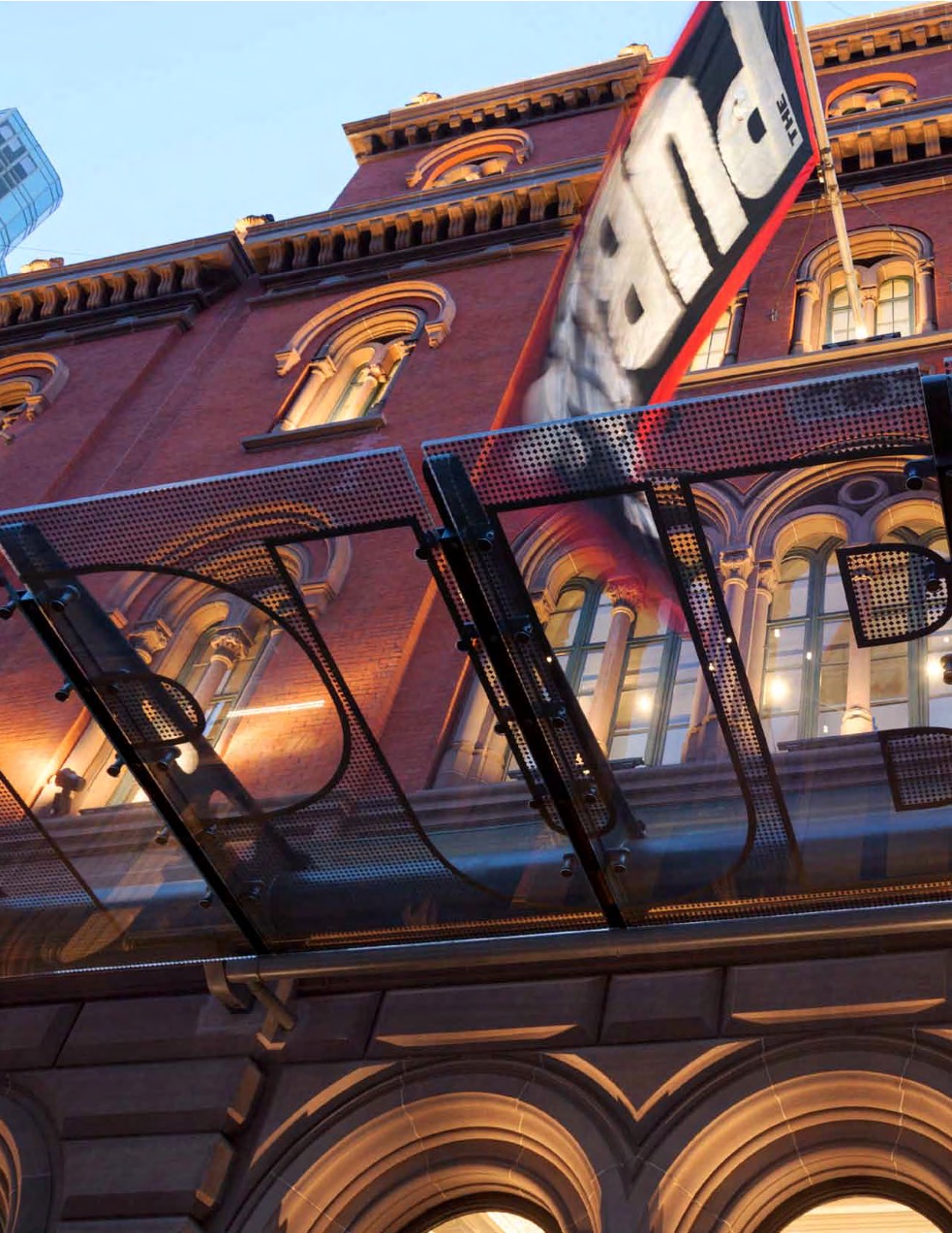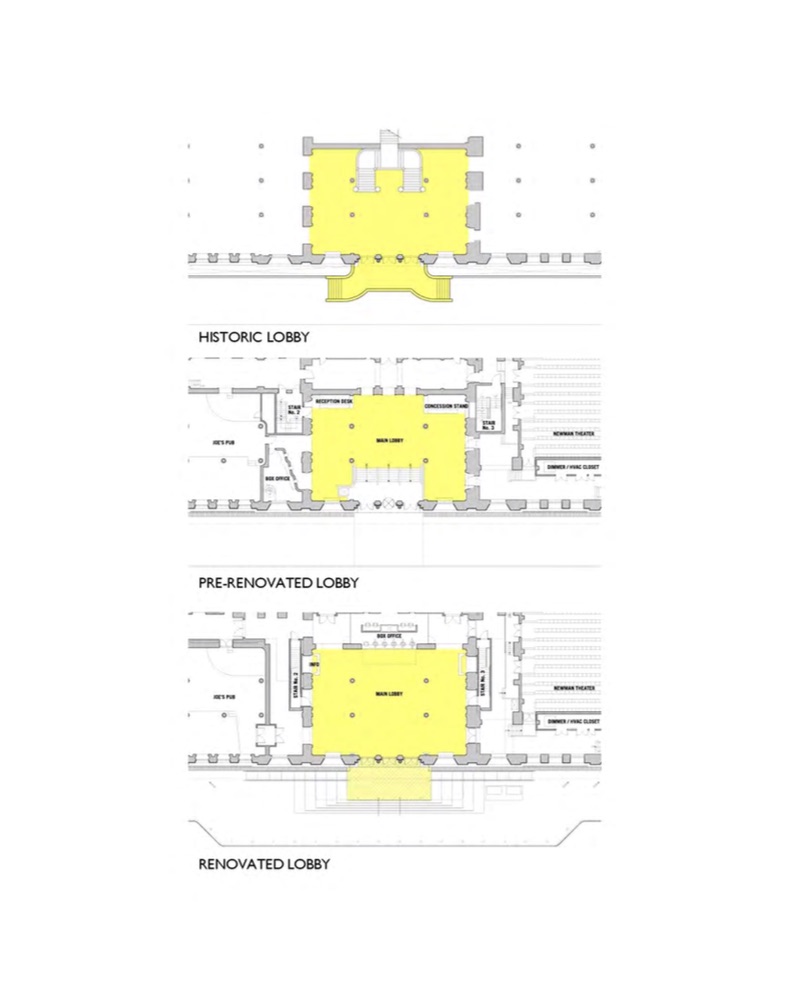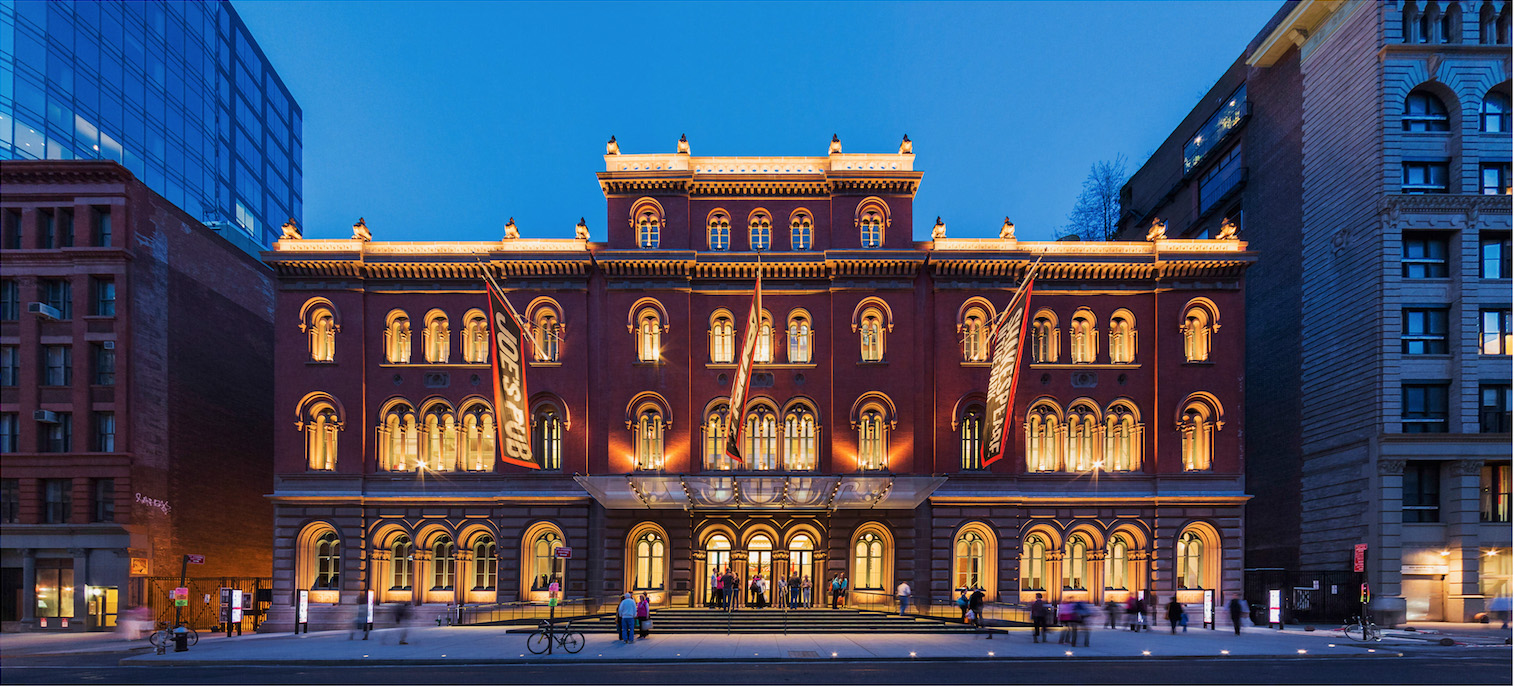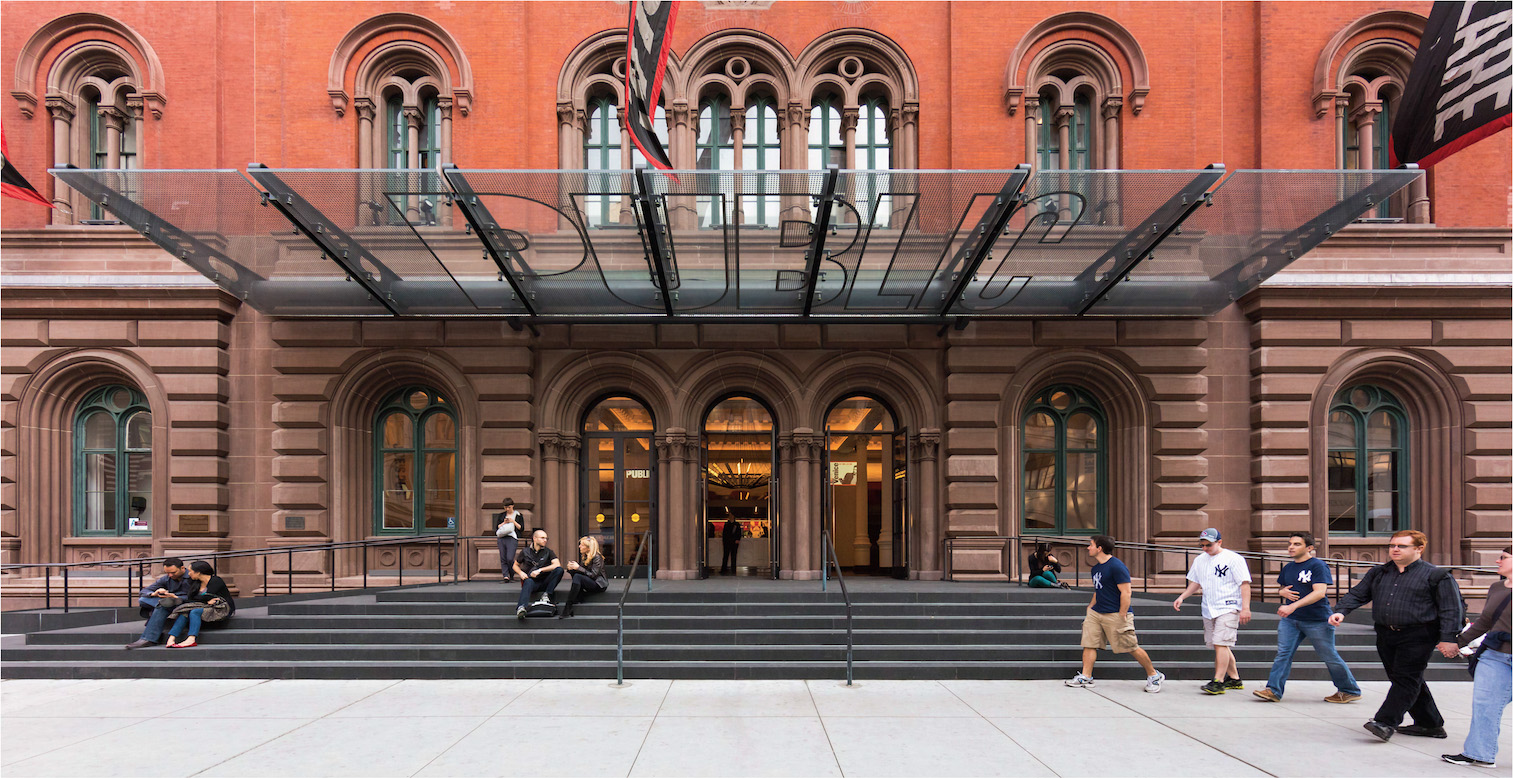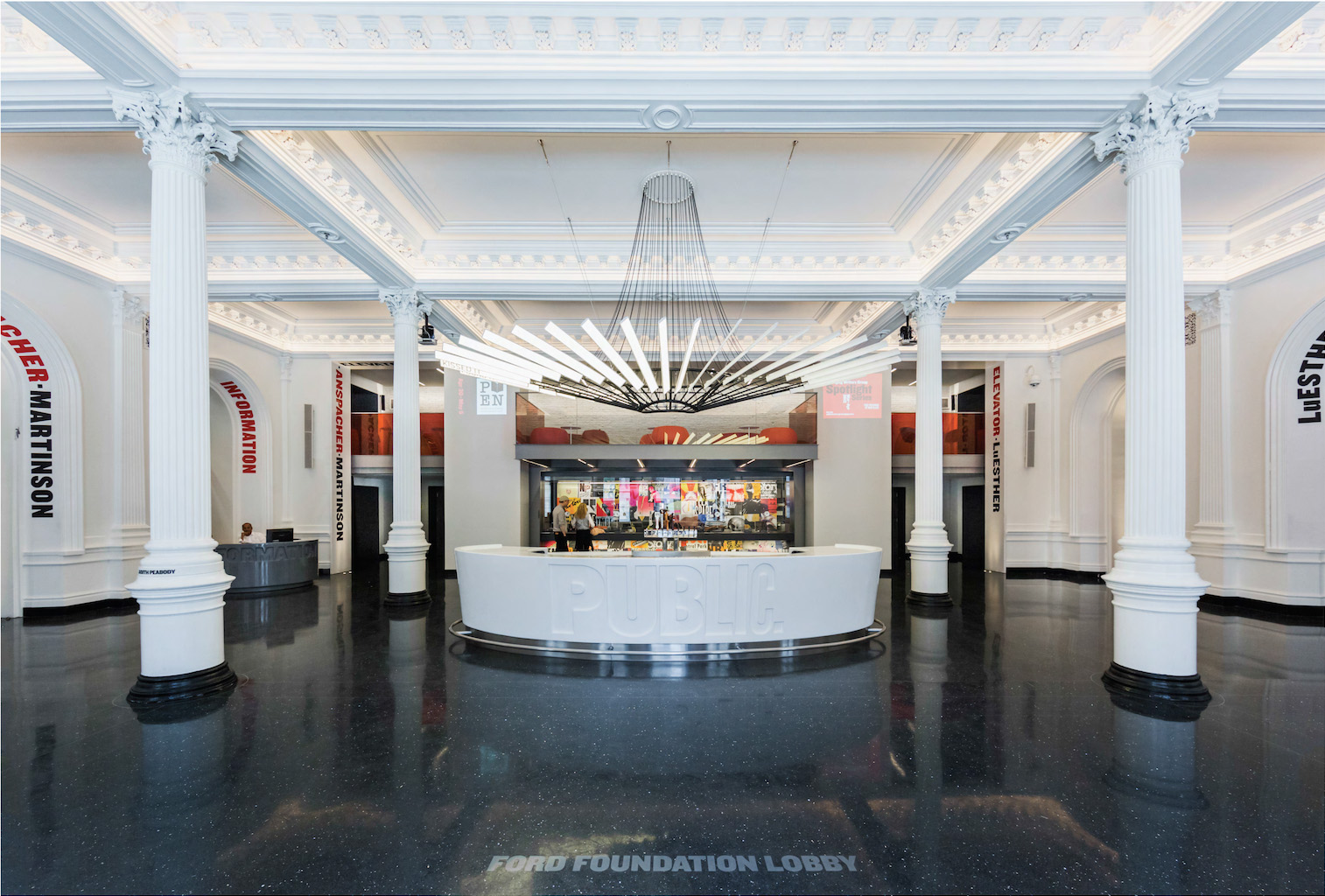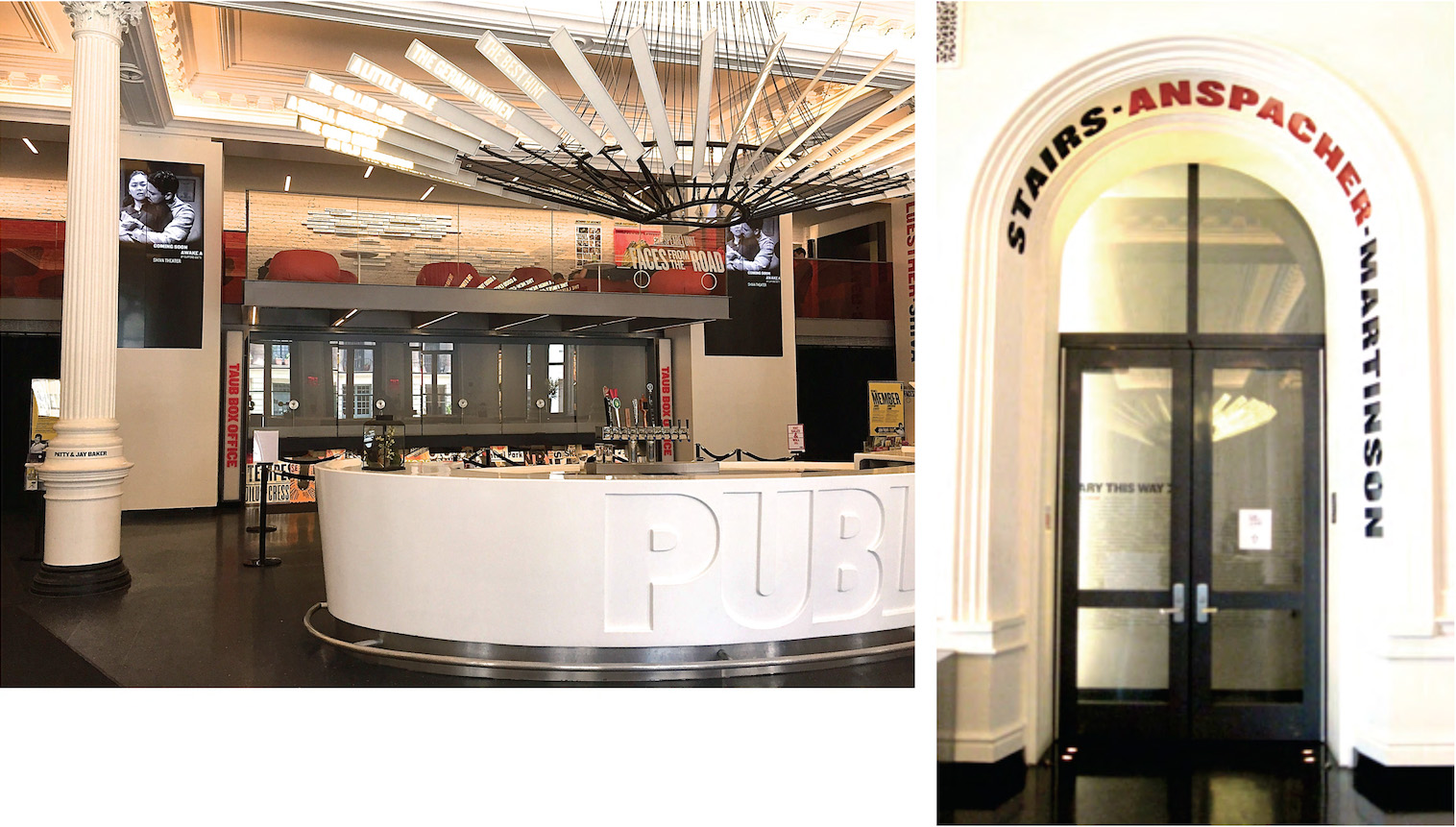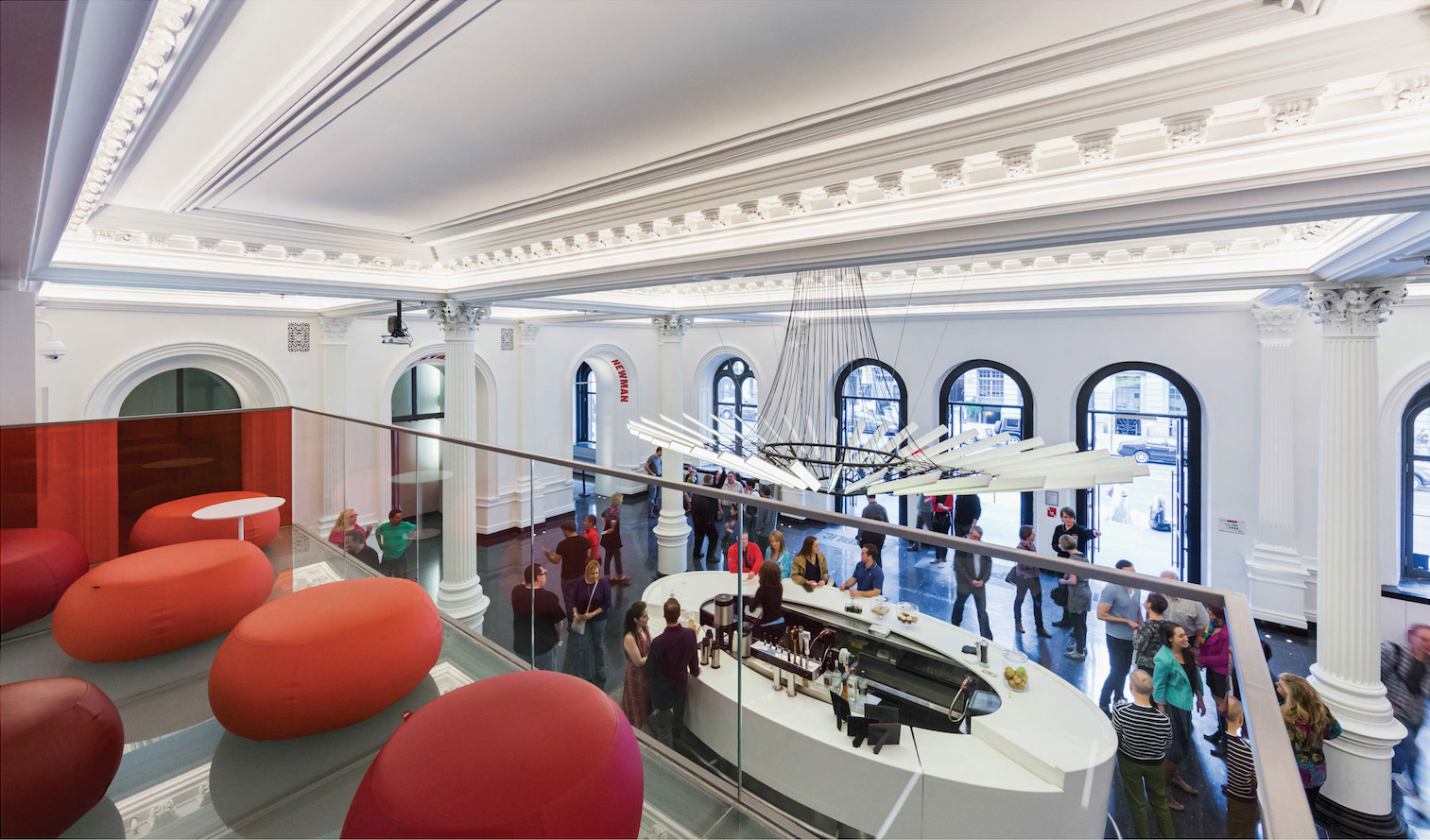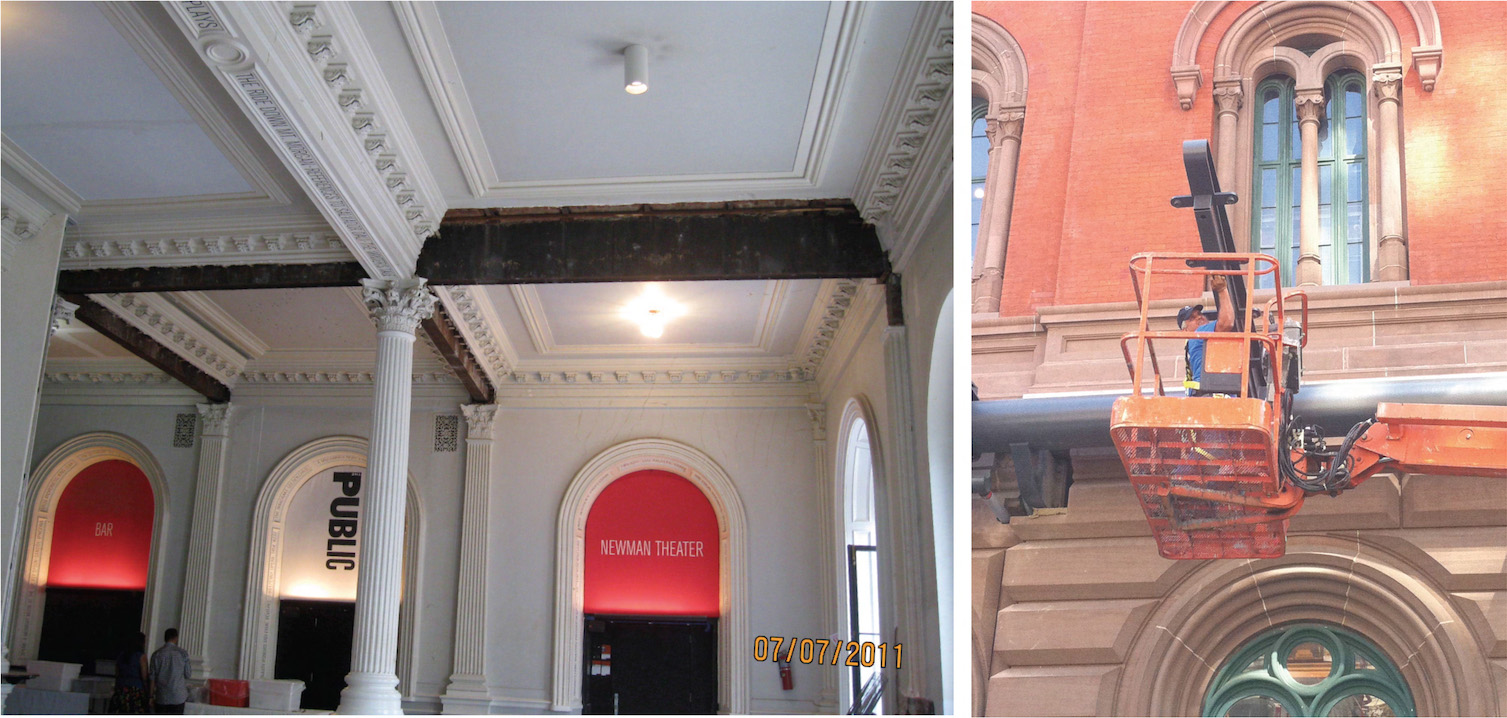Work at the Public Theater began with a building-wide masterplan completed in 1998. It called for phased renovations and restorations of this landmark building that allow it to accommodate both new audiences and an expanded staff. Phase Four and Five of the masterplan completed in 2012 were for preservation/restoration of the landmark façade, redesign of the exterior entry, lobby and public amenities, associated restrooms and food service and the creation of a new patrons’ lounge. The expanded program required expansion of the existing electrical and mechanical utilities. A new addition at the back of the existing building accommodated the services.
A new entry stoop with graceful ADA ramps recreated to replace entry steps and handicap lift from inside the lobby pushing the sidewalk forward taking over parking lane in the Lafayette Street. During design phase a rigorous public approvals process that included presentations and approvals from Manhattan Community Board, Department of City Planning, Department of Traffic and Landmarks Preservation Commission was undertaken. Extending new steps next to the existing utilities required careful nvestigation, appropriate solutions and approvals from Department of Environmental Protection. During construction, by careful sequencing of the activities, the building was kept open and fully functional. Shows went on in all six venues in the building. A new mezzanine structure was inserted for patrons’ lounge, Joe’s Pub offices and expanded public spaces overlooking the lobby. New steel beams to reinforce the existing structure encased within ornate plaster ceiling along with sprinkler fire protection system were seamlessly integrated.
Damyanti, as Associate Partner in-Charge, was responsible for leading the project team, participating in and overseeing the design, development, the approvals process, detailing of the project documents and construction. The program requirements included renovating and expanding the amenities, restrooms and food service, for the patrons. A new glass canopy was designed with minimal structure to satisfy the Landmarks Preservation Commission. To celebrate the newly restored building façade and architectural details, exterior lighting was included in the project Public Art, “Shakespeare Machine” sculpture, paid for by Percent for Arts program was installed in the lobby. Coordination with building structure and integrating with the lobby design was another collaborative effort and accomplishment.
The project is to receive LEED Silver Certification.
